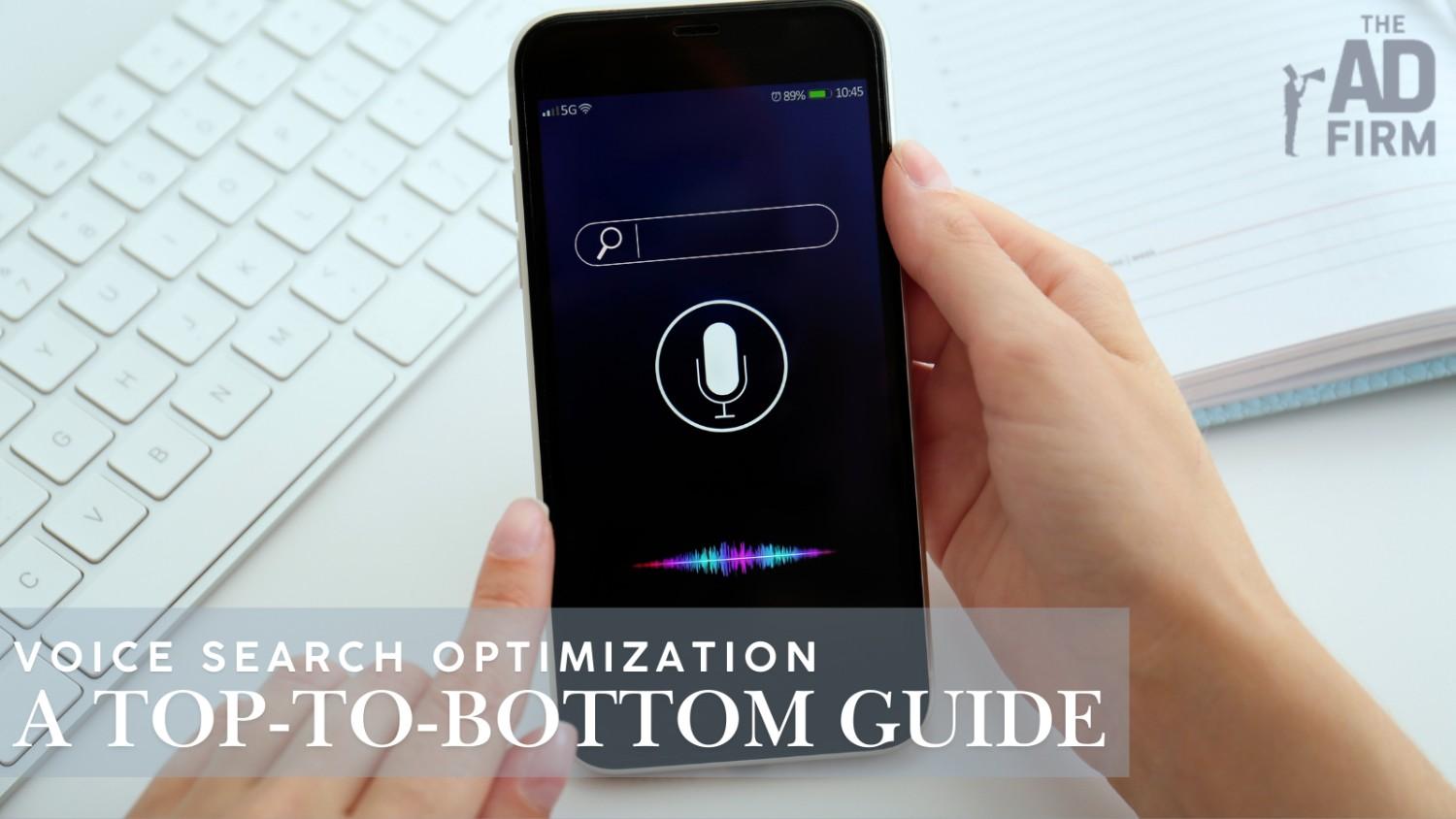In today’s fast-evolving digital landscape, voice search is no longer a futuristic trend—it’s a present-day necessity. As voice-enabled devices like smartphones, smart speakers, and even car dashboards become integral to daily life, businesses must embrace voice search optimization to stay ahead. This guide explores the nuances of voice search optimization, breaking down actionable strategies to ensure your content meets user expectations and ranks at the top of search engine results pages (SERPs).
Understanding Voice Search and Its Impact on SEO
Voice search is revolutionizing how users engage with search engines, introducing a more conversational and personalized way to access information. This shift demands businesses rethink their SEO strategies, moving beyond traditional text-based approaches to cater to the growing audience of voice search users. By adapting to these changes, companies can secure a competitive edge, enhance their visibility, and engage their target audience more effectively.
What Is Voice Search and How It Works?
Voice search is a technology that allows users to speak their queries rather than typing them into a search bar. It is powered by advanced Artificial Intelligence (AI) and Natural Language Processing (NLP), which work together to interpret and process spoken language. These systems don’t just listen to words; they analyze context, intent, and even tone to provide accurate and relevant results.
Key elements of voice search functionality include:
- Speech Recognition: The device converts spoken words into text, accurately identifying the query.
- NLP Algorithms: These algorithms analyze the text, understanding the user’s intent and the query context.
- Search Results Delivery: Using AI, the device matches the query to the most relevant search results, often presenting them in a direct, conversational format.
Devices like Google Assistant, Siri, Alexa, and Cortana have popularized voice search by integrating this technology into smartphones, smart speakers, and other devices. Their ability to process queries such as “Where’s the nearest digital marketing company?” or “What are the best local SEO services near me?” highlights the need for businesses to optimize content for these conversational and localized queries.
Due to its convenience and speed, reliance on voice search technology is growing rapidly. It has simplified information retrieval, especially for on-the-go users, while creating a new challenge for businesses: ensuring their content aligns with voice search patterns.
Why Voice Search Matters for Modern SEO Strategies
The importance of voice search in SEO is underscored by its significant impact on how users interact with content online. This evolution in search behavior shapes digital marketing strategies across industries, making voice optimization a critical focus for businesses aiming to stay relevant and competitive.
Key reasons voice search is indispensable for modern SEO include:
- Rising Popularity: Nearly 50% of all searches are voice-driven, with this trend continuing to increase as devices like smart speakers and voice-enabled assistants become household staples. Ignoring voice search means losing visibility among a growing user base.
- Local Search Dominance: Voice searches frequently focus on local intent. Queries such as “Find a local SEO agency near me” or “What are the best local SEO services?” reflect users’ immediate needs. Businesses with optimized local content are better positioned to attract these searchers.
- Featured Snippets and Concise Answers: Search engines often pull answers directly from featured snippets, which are concise information displayed at the top of search results. These snippets are typically read aloud for voice queries, making them a primary target for optimization. Structuring your content to answer common questions succinctly increases the likelihood of being selected for a snippet.
To succeed in this space, businesses must tailor their SEO strategies to accommodate voice search by:
- Emphasizing conversational language.
- Incorporating question-based keywords that mimic how people speak.
- Structuring content for maximum clarity and relevance to secure position zero (featured snippets).
Aligning your SEO strategy with voice search ensures you stay visible and competitive in an ever-evolving digital landscape. By focusing on user intent, local optimization, and precise answers, businesses can tap into the power of voice search and enhance their online presence.
Key Differences Between Voice and Text Search

Voice search changes how users interact with search engines, requiring businesses to rethink their optimization strategies. Unlike traditional text-based searches, voice queries are conversational, longer, and often more specific. Recognizing these differences is essential to creating an SEO strategy that effectively caters to modern search behavior and delivers results.
Query Length and Conversational Tone
Voice searches tend to be more detailed and conversational context searches. While typing often leads users to input shorter, keyword-driven queries like “best pizza in New York”,”speaking allows for more natural phrasing, such as “Where can I find the best pizza in New York City near me?” This difference in tone and length arises because voice searches reflect the way people naturally speak.
To optimize for this, businesses should:
- Use Long-Tail Keywords: Focus on question-based and detailed phrases that mimic natural language.
- Example: Instead of targeting “local SEO services,” include keywords like “What are the best local SEO services for small businesses?”
- Adopt a Conversational Tone: Create content that feels personal and engaging, aligning with the conversational nature of voice search queries.
- Answer Specific Questions: Develop content that directly addresses common user queries to provide clear and immediate value.
By aligning your content with how people speak, you ensure it resonates with voice search algorithms, increasing the chances of ranking for these queries.
Local Intent in Voice Searches
A key hallmark of voice search is its strong connection to local intent. Many voice queries are location-specific, reflecting users’ immediate needs. This trend highlights the importance of local SEO for businesses aiming to capture voice search traffic. Here’s how you can optimize for local intent:
- Claim and Optimize Your Google My Business Profile:
- Ensure that your business information is accurate and up-to-date, including name, address, phone number (NAP), hours of operation, and service descriptions.
- Encourage customers to leave reviews, as positive reviews can boost your visibility in local voice search results.
- Ensure NAP Consistency:
- Maintain consistent business details across all online directories, your website, and local listings.
- Inconsistencies in NAP information can confuse search engines and hurt your rankings.
- Focus on Location-Based Keywords:
- Include keywords that specify your location and nearby landmarks, such as “best digital marketing agency in Irvine, CA.”
- Create Localized Content:
- Develop blog posts, landing pages, or FAQs that address location-specific topics, like “Top Local SEO Services for Small Businesses in San Diego.”
By prioritizing local SEO strategies, businesses can dominate voice search results for location-based queries and connect with users looking for immediate solutions.
Best Practices for Voice Search Optimization

Crafting an effective voice search optimization strategy requires a deep understanding of how users interact with voice-enabled devices. This involves adapting your content and technical SEO strategies to align with conversational language, mobile usage patterns, and the unique demands of voice queries. Here are the best practices to ensure your business stands out in voice search results.
Focus on Natural Language and Long-Tail Keywords
Natural language and long-tail keywords are the foundation of successful voice search optimization. Voice queries mirror how people speak in everyday conversations, making adopting a more conversational tone in your content essential. For example, instead of targeting a short keyword like “digital marketing agency,” optimize for a question-based query such as “What is the best digital marketing agency near me?”
To align with this behavior:
- Answer Common Questions: Create FAQ sections or blog posts that address questions users are likely to ask, such as “How can I find local SEO services in my area?”
- Integrate Long-Tail Keywords Naturally: Use longer, descriptive phrases that reflect conversational language. For instance, incorporate keywords like “affordable local SEO company for small businesses.”
- Leverage Question-Based Keywords: Frame your content around user intent by including “who,” “what,” “when,” “where,” and “how” questions.
You enhance your visibility in voice search results by aligning your content with natural speech patterns and addressing specific user needs.
Optimizing for Featured Snippets and Position Zero
Featured snippets play a crucial role in voice search. Voice assistants often pull responses directly from these snippets, making them a top priority for SEO. Structuring content effectively increases the chances of securing this position.
To optimize for featured snippets:
- Use Clear Headings: Well-structured headings improve readability and help search engines identify key topics. Each heading should directly answer a specific question.
- Start with Concise Answers: Begin each section with a brief, direct answer before expanding with supporting details and examples. This improves snippet eligibility while keeping content engaging.
- Integrate Keywords Naturally: Keywords should fit seamlessly within the content without disrupting readability. Avoid keyword stuffing and focus on relevance and clarity.
Optimizing for featured snippets enhances visibility in both traditional and voice search, ensuring users receive immediate and accurate information.
Mobile and Site Speed Optimization
Since the majority of voice searches occur on mobile devices, ensuring your site is mobile-friendly and fast-loading is critical. A smooth mobile experience supports voice search optimization and improves overall user satisfaction.
Here’s how to optimize your site for mobile and speed:
Responsive Design: A well-implemented responsive design ensures that your website adjusts seamlessly across different screen sizes and devices. Navigation menus, images, and interactive elements should remain fully functional on mobile, tablets, and desktops. A responsive layout improves accessibility and provides a consistent user experience, preventing frustration caused by distorted content or broken features.
Improve Loading Times: Faster websites retain visitors and improve engagement. Tools like Google PageSpeed Insights help identify performance bottlenecks and suggest areas for optimization. Reducing page load times requires compressing images, enabling browser caching, and minimizing unnecessary code. A fast-loading site not only enhances user experience but also contributes to higher rankings in search results.
Enhance User Experience: A streamlined user experience encourages visitors to stay longer and interact with your content. Organizing information logically and simplifying site navigation makes it easy for users to find what they need. High-quality, relevant content that aligns with user expectations reduces bounce rates and strengthens credibility. Ensuring a smooth browsing experience keeps users engaged and increases the likelihood of conversions.
By prioritizing mobile-friendliness and fast loading times, you position your website as a user-friendly destination that performs well in voice search results.
Measuring and Refining Your Voice Search Strategy
To maintain and enhance the effectiveness of your voice search optimization efforts, tracking performance and adapting to the evolving digital landscape is essential. You can consistently monitor key metrics and leverage the right tools to ensure your strategy stays relevant and impactful.
Key Metrics to Track for Voice Search Performance
Understanding the success of your voice search optimization efforts requires focusing on specific metrics that reflect user engagement and search visibility. These metrics provide valuable insights into your content’s performance in the voice search ecosystem.
- Organic Traffic from Voice-Activated Devices: Tracking organic traffic from voice searches is essential for understanding how users interact with your content through voice-activated assistants like Google Assistant, Siri, and Alexa. Tools like Google Analytics can help identify trends in organic search traffic linked to voice queries. Monitoring these insights allows businesses to refine their content strategy and improve visibility in voice search results.
- Local Search Rankings: Voice searches often have a strong local intent, making it crucial to track how well your business performs in local search results. Platforms like BrightLocal and Google Business Profile insights provide valuable data on search visibility, direction requests, and call clicks generated from local searches. Improving these metrics ensures that your business is easily discoverable when users search for nearby services using voice commands.
- Click-Through Rates (CTR) on Voice-Optimized Content: Evaluating the performance of content targeting featured snippets and question-based queries helps determine how well it resonates with users. A high CTR indicates that the content aligns with search intent and effectively answers user queries. Using tools like Google Search Console allows businesses to track CTR for specific pages optimized for voice search, providing insights into areas that may need refinement to capture more engagement.
Regularly analyzing these metrics helps you understand the effectiveness of your voice search optimization and identify areas for improvement.
Tools and Techniques for Continuous Optimization
Staying ahead in voice search requires specialized tools and a proactive approach to refining your strategy. Here are some of the most reliable tools and techniques for monitoring and improving voice search performance:
- Google Analytics
Google Analytics helps analyze traffic sources and segment visits from voice-activated devices. While it doesn’t explicitly flag voice searches, user behavior patterns—such as longer query phrases and question-based searches—can provide indirect insights into voice search traffic. Monitoring these trends allows businesses to refine their content for better voice search optimization.
- SEMRush
SEMRush provides advanced keyword tracking and content analysis, making it a valuable tool for monitoring voice-friendly, long-tail keywords. Businesses can use it to track rankings for conversational queries and local search terms commonly used in voice searches. This helps refine SEO strategies to align with natural language searches.
- Ahrefs
Ahrefs offers extensive SEO insights, including backlink analysis, content performance tracking, and keyword rankings. Its keyword explorer is particularly useful for identifying trending conversational queries that match voice search behavior. By monitoring these keywords, businesses can optimize their content for more natural, spoken queries.
- BrightLocal
For businesses focusing on local SEO, BrightLocal provides essential tools for tracking local search rankings, citation accuracy, and Google Business Profile performance. These insights are crucial for optimizing content for “near me” searches, which are common in voice queries. Tracking this data helps businesses improve visibility in local voice search results.
- Google Search Console
Google Search Console helps track the performance of pages optimized for voice queries. It provides data on impressions, clicks, and average ranking position, allowing businesses to assess how well their content aligns with voice search behavior. By analyzing this information, businesses can refine their content strategy to better capture voice search traffic.
Techniques for Continuous Optimization
- Content Audits
Regular content audits help ensure that your website remains aligned with evolving voice search trends. Reviewing existing pages allows you to update outdated information, refine keyword usage, and adapt content to match user intent more effectively. Keeping content fresh and relevant increases its chances of ranking well for voice queries.
- Refining Keyword Strategies
Voice searches tend to be more conversational, making long-tail keywords essential for optimization. Incorporating emerging voice search patterns into your keyword strategy ensures your content stays competitive. Tools like AnswerThePublic can help identify commonly asked questions, allowing you to structure content around phrases that match natural speech patterns.
- Focus on Structured Data
Implementing schema markup enhances search engines’ understanding of your content, improving the likelihood of appearing as a featured snippet in voice search results. Structured data makes information more accessible for AI-driven voice assistants, allowing them to pull clear, concise answers directly from your site.
- User Feedback and Testing
Optimizing for voice search isn’t just about algorithms—it’s also about real user experiences. Gathering feedback helps identify pain points in navigation and accessibility, ensuring a smooth interaction for voice search users. Conducting A/B tests on content structure, keyword placement, and CTA effectiveness helps refine strategies and improve engagement.
Combining these tools and techniques allows you to build an agile voice search optimization strategy that evolves with user behavior and search engine advancements.
Embrace the Future: Why Voice Search Optimization is Essential for Your Business
Voice search is no longer a passing trend—it’s transforming how users interact with search engines and businesses. You can secure a competitive edge in this evolving digital space by integrating conversational language, leveraging local SEO, and prioritizing user-friendly design.
Are you ready to elevate your digital presence and dominate voice search? Partner with The Ad Firm, the best digital marketing agency offering expert local SEO services and tailored optimization strategies. Don’t wait—contact The Ad Firm today to future-proof your business and stay ahead of the competition in the voice search era!









